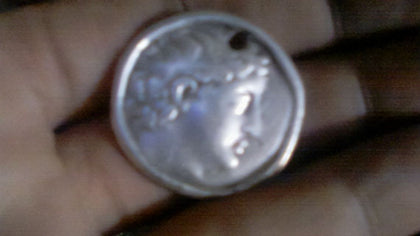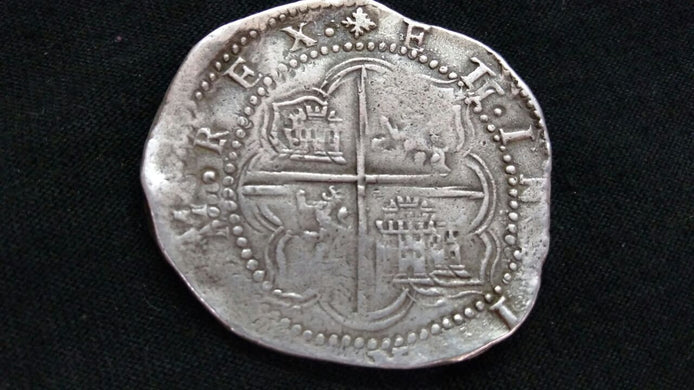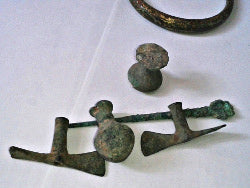اكتشاف نادر: تيترادراداخم، من العصر السلوقي

المنطقة: North Africa
القيمة المقدرة: USD 960.00
التصنيف الزمني: between 270 and 220 BC
سلالة الديدوتشي السلوقية السلوقية
تعود هذه القطعة النقدية النادرة إلى المملكة السلوقية، من الفترة ما بين 270 و220 قبل الميلاد، كانت الإمبراطورية السلوقية سلالة الديدادوشيين في الشرق الأدنى. كان مؤسس السلوقيين، سلوقس الأول، قائداً للإسكندر الأكبر وورث مقاطعة بابل بعد وفاته. بعد المزيد من الفتوحات، سقطت أجزاء كبيرة من إمبراطورية الإسكندر القديمة في الأراضي السلوقية. في أوج ازدهارها، كانت أجزاء كبيرة من آسيا الصغرى وسوريا وبلاد ما بين النهرين وفارس وبارثيا وباكتريا تابعة للمناطق السلوقية.
هذه القطعة النقدية هي عملة رباعية الأرباع، ربما من عهد أنطيوخوس هيراكس.
ثقافة النقود في الإمبراطورية السلوقية
غالباً ما تُظهر النقود السلوقية صورة الحاكم الذي كان في السلطة في ذلك الوقت، مثل أنطيوخوس الأول أو سلوقس الأول. ولا يُعرف الجنرالات والحكام الأقوياء من السلوقيين إلا من خلال صورهم الذاتية على عملات محفوظة جيداً.
ومن الجدير بالذكر أيضاً أن النقود المعدنية كانت تستخدم كدعاية في الإمبراطورية السلوقية، وغالباً ما كانت تؤثر على الشعب من خلال الرسائل الدعائية عليها.

تُظهر العملة على الأرجح صورة الحاكم أنطيوخوس هيراكس. وقد حكم الإمبراطورية السلوقية حوالي عام 230 قبل الميلاد بعد أن أعلنه أخوه الأكبر سلوقس الثاني حاكماً مشاركاً. إلا أنه انقلب على أخيه وطرده من آسيا الصغرى. وبالتالي، أصبح أنطيوخوس الثاني حاكمًا على أجزاء كبيرة من آسيا الصغرى. وينعكس هذا الطموح أيضًا في اسم أنطيوكوس. هيراكس يعني الصقر، والذي كان يمثل الطموح في ثقافة الإمبراطورية السلوقية.
اقتصاد الإمبراطورية السلوقية
استفادت الإمبراطورية السلوقية، مثل سابقاتها، من موقعها الجغرافي الملائم على طريق الحرير. بين عام 115 قبل الميلاد والقرن الثالث عشر الميلادي، كان طريق الحرير أحد أهم الطرق التجارية، إن لم يكن أهمها في العالم. كان الطريق الذي يبلغ طوله 6,400 كم (حوالي 4,000 ميل) يمتد على طول سور الصين العظيم، عبر جبال بامير إلى أفغانستان. ومن أفغانستان، تم شحن البضائع المنقولة عبر البحر الأبيض المتوسط. وهكذا، ربط طريق الحرير جزءًا كبيرًا جدًا من الاقتصادات الآسيوية والأوروبية.
استفادت كل دولة وإمبراطورية على طول طريق الحرير من طرق التجارة القصيرة والفعالة. كان الاقتصاد الرئيسي في المدن الغربية للإمبراطورية السلوقية هو تجارة المجوهرات المعدنية والخزف. ثم تم تصدير هذه البضائع بشكل رئيسي إلى إيطاليا واليونان. وكانت منطقة بابل متخصصة بشكل خاص في إنتاج المنسوجات. وقد أتاح لهم موقع الإمبراطورية السلوقية على البحر الميت الحصول على الأسفلت لبناء الطرق.
وكأي اقتصاد عظيم ذي معدل دوران كبير، احتاجت الإمبراطورية إلى وسيط عالمي لتبادل بضائعها: العملات المعدنية. كانت العملات المعدنية هي الوسيلة المركزية للدفع والتبادل في العالم منذ اختراعها في الصين منذ ما يقرب من 2000 عام.
Get Rewarded for Your Treasure Finds
You have also made discoveries and detected amazing artifacts and would like to share them (anonymously)? We look forward to reading and publishing your success stories!


